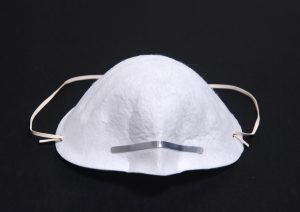Amid the cancellation of air travel to and from China, an increasing number of countries reporting cases and the rising death toll of the novel coronavirus (2019-nCoV), one aspect of the infection’s spread remains steadfast: the face mask. Nearly every article — including the World Health Organization (WHO) information page on the virus — includes imagery of Asian people wearing various masks, inadvertently perpetuating xenophobia and racism.
Face masks have played a role in Asian culture far before the coronavirus crisis. Face masks have been used in China, specifically, for a variety of reasons in the recent past, ranging from health to fashion. Understanding the various uses of masks in China is essential before assuming that any person of Asian ethnicity wearing a mask is a carrier of coronavirus.
First and foremost, face masks are used to combat air pollution. From 2008 to 2017, 23 of the top 50 most polluted cities in the world were in China. Throughout China, the Air Quality Index (AQI) is often checked in tandem with the weather, with many Chinese donning face masks on a daily basis both indoors and outdoors. Many face masks indicate whether they have a high-efficiency particulate air (HEPA) filter, alongside the size of the particles they block (known as particulate matter, or PM). These specific measures target customers interested in protecting themselves from inhaling smog and allergens, such as pollen and dust. While the Chinese government has made recent strides in reducing air pollution, it continues to be a vast public health concern. Even today, in addition to the panic surrounding the coronavirus, Chinese people in provinces in northern China are wearing face masks to avoid heavy smog related to fireworks lit during the Lunar New Year.
Masks are also worn for health-related purposes beyond disease prevention. Chinese traditional medicine, for example, envisions a much more interconnected relationship between one’s body and the environment. Some Chinese wear masks due to traditions found in Taoism, a Chinese philosophy, which emphasizes one’s qi (气), roughly meaning air or energy. Clean breathing is an essential piece of keeping one’s qi balanced, preventing “good” air from leaving and harmful air from entering. Wearing a face mask is a modern take on regulating that process.
The vast demand for masks has produced a market that extends beyond the call for protection against disease and pollutants. Masks have become a fashion statement, coming in various styles and jumpstarting an extensive industry. Chinese celebrities are often pictured wearing masks for anonymity purposes, further entrenching the trend. The face mask has also spread in popularity across East Asia, appearing in Korean and Japanese popular culture. This preexisting market is apparent considering the increased demand for face masks in Asia has not yet inspired fear of supply shortages. In direct comparison, the sudden high demand for face masks abroad — specifically in the West — has led to supply shortages that could put healthcare workers at risk.
Experts are increasingly questioning whether wearing masks can actually reduce the likelihood of contracting the virus, which could potentially help avoid shortages and quell public panic. A New York Times op-ed maintained that while masks may be more effective indoors or in enclosed spaces, using a mask in open-air environments may not be effective. Further, coronaviruses are spread often via air by coughing or sneezing, yielding common surgical masks and large water bottles as pseudo-masks as ineffective prevention considering they still allow for particles to enter through your nose and mouth. The most effective mask is the N95 respirator, but even this option is not suitable for children or people with facial hair. Most notably, the WHO does not mention wearing masks of any kind in their recommendations to prevent the coronavirus:
“Standard recommendations to prevent infection spread include regular hand washing, covering mouth and nose when coughing and sneezing, thoroughly cooking meat and eggs. Avoid close contact with anyone showing symptoms of respiratory illness such as coughing and sneezing.”
Face masks are not the solution to coronavirus, and those who wear them are thus not the culprits nor the faces of the illness. The recent outbreak has contributed to the internationalization of the face mask through its association with coronavirus, but the face mask is by no means a sign of infection. Racist stereotypes plaguing mask-wearing Asians lack cultural awareness that masks can and have been worn for purposes beyond disease prevention, far before the introduction of the current coronavirus crisis.

































